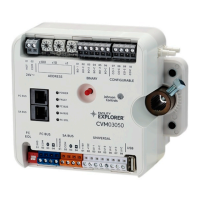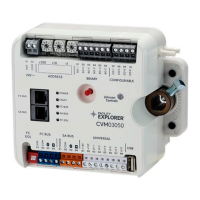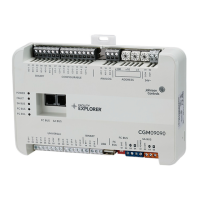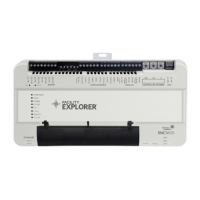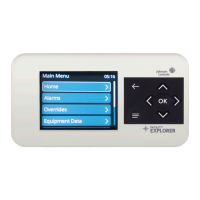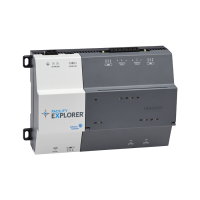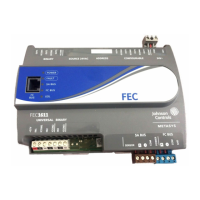F4-CV Series VAV Terminal Equipment
Controllers Installation Guide
Application
The CV series controllers are designed for variable air
volume (VAV) box applications.
CV series controllers feature 14 preloaded standard
applications to allow this controller to operate
standard VAV box equipment with a proven energy-
efficient sequence of operation, without the need for
programming. For information on configuring a CV series
controller to use a preloaded application, see Setting a
preloaded application. These controllers are also fully
programmable, using the Controller Configuration Tool
(CCT), providing the flexibility to create custom control
sequences.
CV series controllers feature an integral damper actuator,
a digital Differential Pressure Transmitter (DPT) sensor,
and a 32-bit microprocessor. The CVM03050-0P and
CVE03050-0P models feature an integral potentiometer to
sense actual VAV box damper position.
CV series controllers also include an integral real-time
clock, which enables the controllers to monitor and
control schedules, calendars, and trends, and operate
for extended periods of time as stand-alone controllers
when offline from the Facility Explorer system network.
These controllers connect easily to the wired and
wireless network sensors for zone and discharge air
temperature sensing. Their small package size facilitates
quick field installation and efficient use of space without
compromising control performance.
Figure 1: F4-CVM3050
Communications protocols
CV series controllers can communicate using multiple
communication protocols depending on model and
configuration. The CVE controllers communicate using
the BACnet/IP communication protocol. CVM controllers
communicate using the BACnet MS/TP communications
protocols, with the addition of ZFR183x Pro Wireless
Field Bus Routers. Equipment Controllers in BACnet/IP or
BACnet/MSTP communication mode are BACnet network-
compliant devices. The BACnet protocol is a standard
for ANSI, ASHRAE, and the International Standards
Organization (ISO) for building controls.
To configure CVM controllers to communicate using
the wireless communications protocol, see Configuring
wireless communications (CVM models only).
North American Emissions Compliance
United States
This equipment has been tested and found to comply
with the limits for a Class A digital device pursuant to
Part 15 of the FCC Rules. These limits are designed
to provide reasonable protection against harmful
interference when this equipment is operated in a
commercial environment. This equipment generates,
uses, and can radiate radio frequency energy and, if not
installed and used in accordance with the instruction
manual, may cause harmful interference to radio
communications. Operation of this equipment in a
residential area may cause harmful interference, in which
case the users will be required to correct the interference
at their own expense.
Canada
This Class (A) digital apparatus meets all the
requirements of the Canadian Interference-Causing
Equipment Regulations.
Cet appareil numérique de la Classe (A) respecte toutes
les exigences du Règlement sur le matériel brouilleur du
Canada.
Installation
Observe the following guidelines when installing the
controller:
• To minimize vibration and shock damage to the
controller, transport the controller in the original
container.
• Verify that all parts shipped with the controller.
• Do not drop the controller or subject it to physical
shock.
*241014301809D*
Part No. 24-10143-01809 Rev. D
11.0
2022-04-05
(barcode for factory use only)
F4-CVM03050-0, F4-CVM03050-0P
